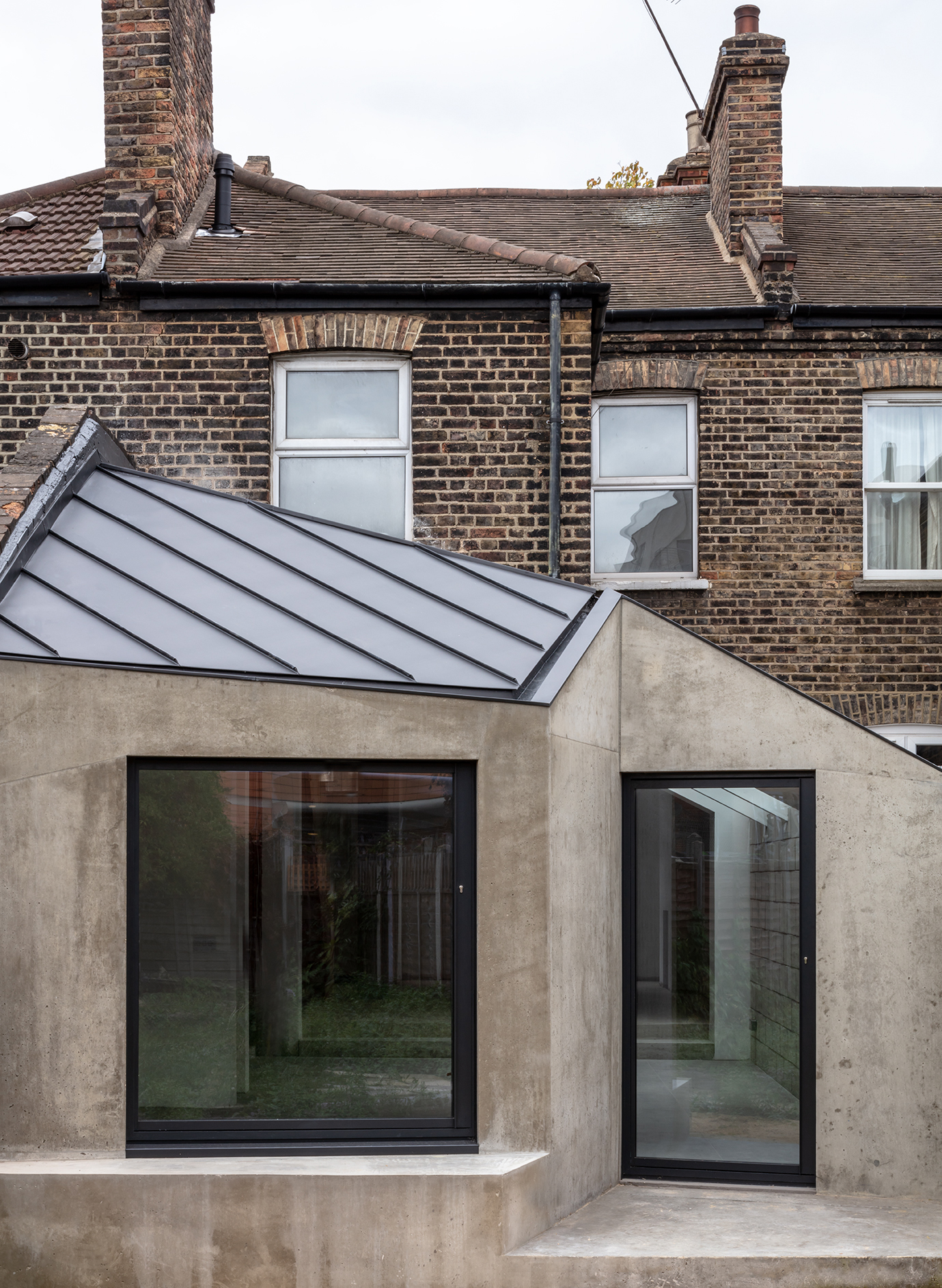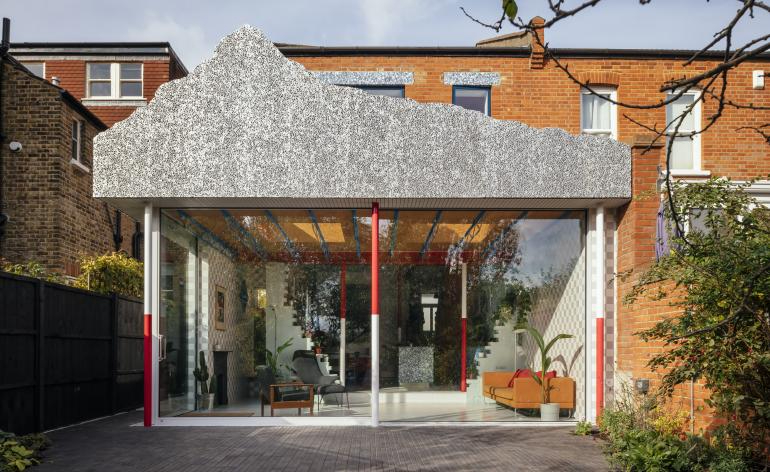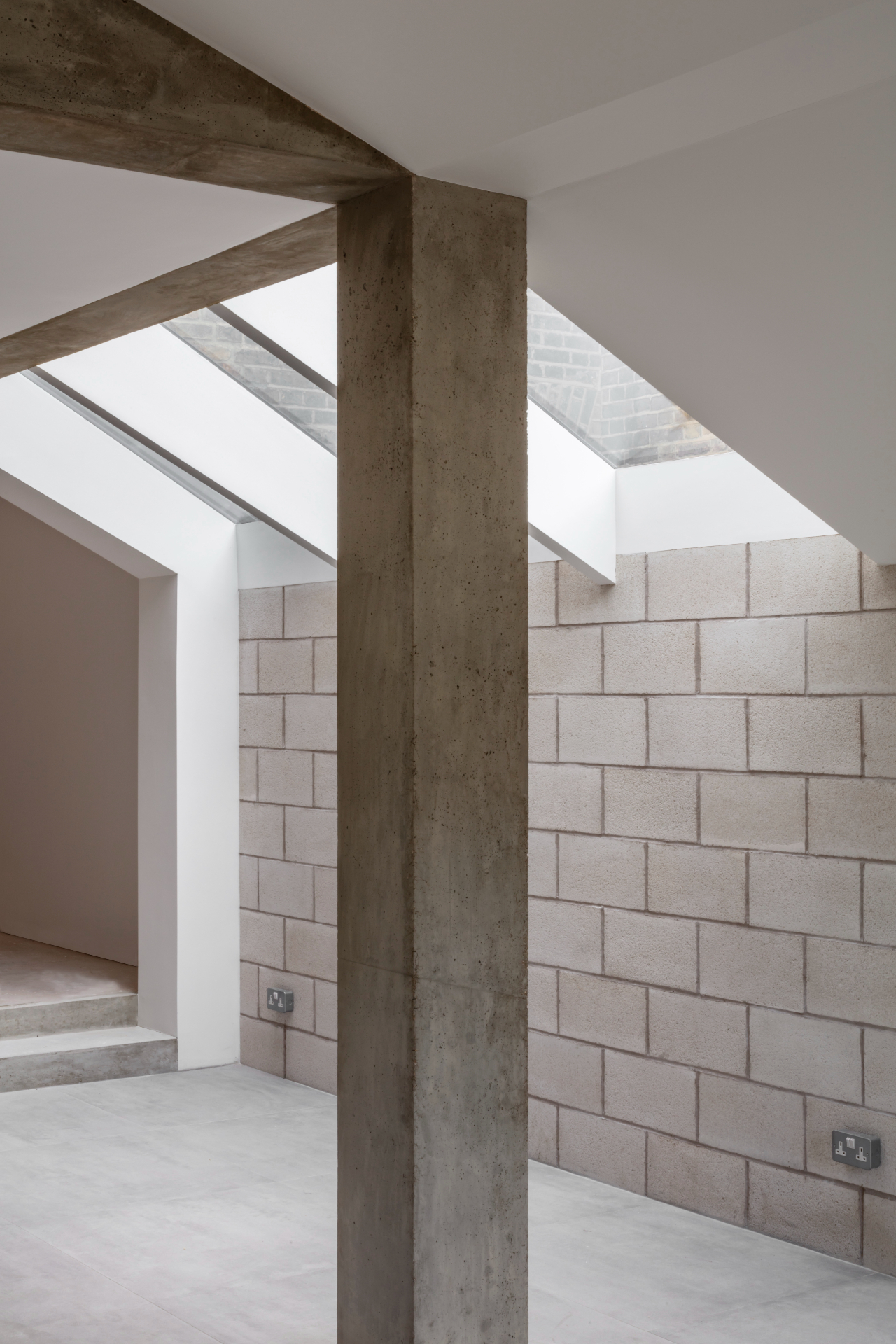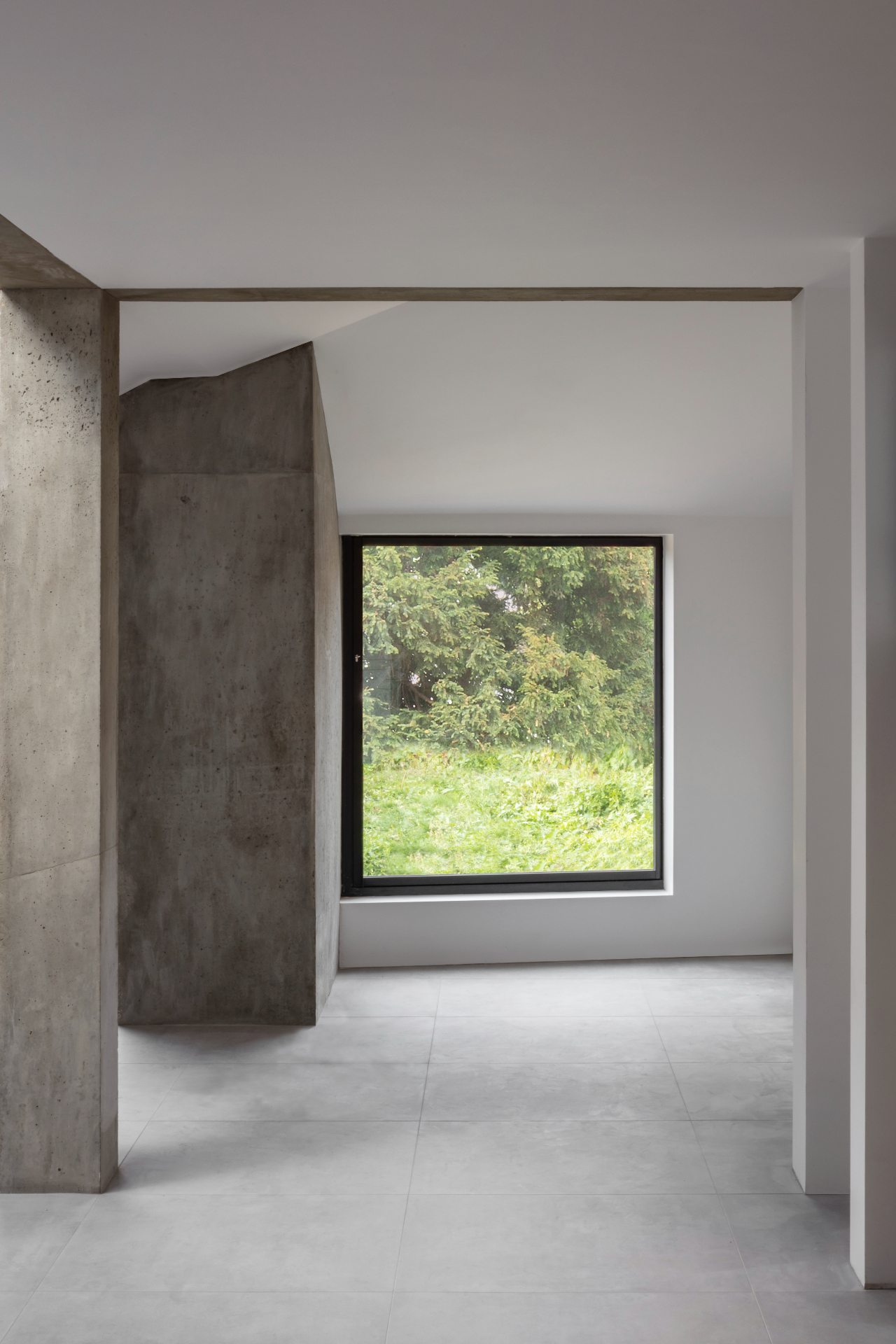East London house extension is a study in raw concrete
Emerging architecture practice Studio McW unveils an East London house extension, 3 Planes, led by geometry and its use of sculptural, raw concrete

Marcus Peel - Photography
A house extension in East London became an exercise in geometry, when architects Studio McW started exploring options by using lines and surfaces in their search for the best fit within the existing context. Named 3 Planes for its geometric approach, the project is also a study in concrete, making the most of tactile, sculptural surfaces that envelope all the new spaces.
‘Taking into consideration the constraints of local planning policy, whilst utilising the opportunities granted by the existing conservatory and its (albeit dilapidated) volume, we were able to manipulate the form to respond to the client’s brief,' explains Greg Walton, who set up the young studio in 2016 with David McGahon.
The scheme involves a rear extension, which is just the first phase in a longer-term, two-part expansion project. Now that works on that, located on the ground floor, are completed, the architects are about to begin reworking the top level and loft.

When the client bought the property, it was in a state of disrepair. Studio McW transformed it responding to the new owner's desire for a wide, fluid space with a warehouse-style feel. The interior was opened up, using industrial materials, such as concrete, fair-faced block-work and dark metal. Now, the interior is defined by its light and shadow play, textured surfaces and response to human proportions, as well as views and privacy considerations.
‘We wanted to use concrete and simple materials to create a calming internal space, so we referenced Xavier Corbero’s labyrinth home in Catalonia, and we enjoy the unfussy interiors of John Pawson,' explains Walton.
RELATED STORY

The project may seem clean and simple but it did not come without its challenges – its minimalist approach being a key one, especially in terms of construction and detailing.
The architects recall: ‘Translating the geometry of three planes onto site, as the angles were meticulously measured to ensure that only three planes were required for each of the roof and walls, the contractor had to build carefully to ensure that each element lined through with one another, and constant cross checking against the setting out drawings was critical.'



INFORMATION
Receive our daily digest of inspiration, escapism and design stories from around the world direct to your inbox.
Ellie Stathaki is the Architecture & Environment Director at Wallpaper*. She trained as an architect at the Aristotle University of Thessaloniki in Greece and studied architectural history at the Bartlett in London. Now an established journalist, she has been a member of the Wallpaper* team since 2006, visiting buildings across the globe and interviewing leading architects such as Tadao Ando and Rem Koolhaas. Ellie has also taken part in judging panels, moderated events, curated shows and contributed in books, such as The Contemporary House (Thames & Hudson, 2018), Glenn Sestig Architecture Diary (2020) and House London (2022).
-
 Inside Christian de Portzamparc’s showstopping House of Dior Beijing: ‘sculptural, structural, alive’
Inside Christian de Portzamparc’s showstopping House of Dior Beijing: ‘sculptural, structural, alive’Daven Wu travels to Beijing to discover Dior’s dramatic new store, a vast temple to fashion that translates haute couture into architectural form
-
 A music player for the mindful, Sleevenote shuns streaming in favour of focused listening
A music player for the mindful, Sleevenote shuns streaming in favour of focused listeningDevised by musician Tom Vek, Sleevenote is a new music player that places artist intent and the lost art of record collecting at the forefront of the experience
-
 Take a tour of the 'architectural kingdom' of Japan
Take a tour of the 'architectural kingdom' of JapanJapan's Seto Inland Sea offers some of the finest architecture in the country – we tour its rich selection of contemporary buildings by some of the industry's biggest names
-
 Arbour House is a north London home that lies low but punches high
Arbour House is a north London home that lies low but punches highArbour House by Andrei Saltykov is a low-lying Crouch End home with a striking roof structure that sets it apart
-
 A former agricultural building is transformed into a minimal rural home by Bindloss Dawes
A former agricultural building is transformed into a minimal rural home by Bindloss DawesZero-carbon design meets adaptive re-use in the Tractor Shed, a stripped-back house in a country village by Somerset architects Bindloss Dawes
-
 RIBA House of the Year 2025 is a ‘rare mixture of sensitivity and boldness’
RIBA House of the Year 2025 is a ‘rare mixture of sensitivity and boldness’Topping the list of seven shortlisted homes, Izat Arundell’s Hebridean self-build – named Caochan na Creige – is announced as the RIBA House of the Year 2025
-
 In addition to brutalist buildings, Alison Smithson designed some of the most creative Christmas cards we've seen
In addition to brutalist buildings, Alison Smithson designed some of the most creative Christmas cards we've seenThe architect’s collection of season’s greetings is on show at the Roca London Gallery, just in time for the holidays
-
 In South Wales, a remote coastal farmhouse flaunts its modern revamp, primed for hosting
In South Wales, a remote coastal farmhouse flaunts its modern revamp, primed for hostingA farmhouse perched on the Gower Peninsula, Delfyd Farm reveals its ground-floor refresh by architecture studio Rural Office, which created a cosy home with breathtaking views
-
 A revived public space in Aberdeen is named Scotland’s building of the year
A revived public space in Aberdeen is named Scotland’s building of the yearAberdeen's Union Terrace Gardens by Stallan-Brand Architecture + Design and LDA Design wins the 2025 Andrew Doolan Best Building in Scotland Award
-
 The Architecture Edit: Wallpaper’s houses of the month
The Architecture Edit: Wallpaper’s houses of the monthFrom wineries-turned-music studios to fire-resistant holiday homes, these are the properties that have most impressed the Wallpaper* editors this month
-
 A refreshed 1950s apartment in East London allows for moments of discovery
A refreshed 1950s apartment in East London allows for moments of discoveryWith this 1950s apartment redesign, London-based architects Studio Naama wanted to create a residence which reflects the fun and individual nature of the clients